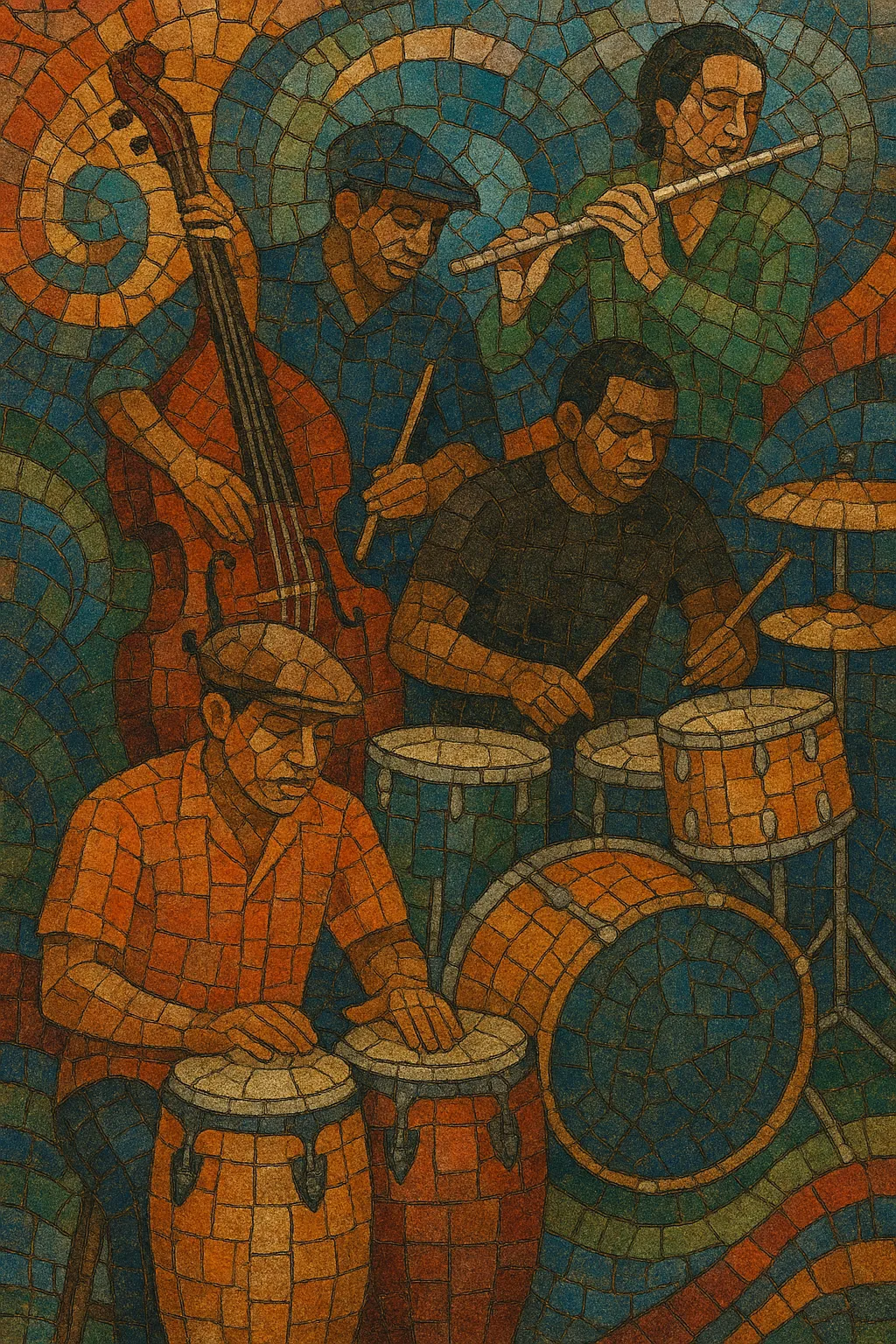Songo is a Cuban popular dance style forged in the early 1970s by Los Van Van under bassist-bandleader Juan Formell and master drummer Changuito (José Luis Quintana).
It blends the rhythmic language of son and rumba with the timbral palette and groove sensibilities of funk, jazz, and rock. Its most distinctive innovation is the full integration of the modern drum set into Cuban dance music alongside congas, timbales, and other hand percussion. The result is a syncopated, polyrhythmic fabric that is clave-aligned yet flexible, with drum-set patterns that converse with piano tumbaos and the bass.
Arrangements often retain a charanga backbone (flute and violins) augmented by electric bass, keyboards/synths, and sometimes trombones, producing a warm yet punchy dance-floor sound. Songo set the stage for the later evolution of timba and reshaped how Cuban ensembles orchestrate rhythm, harmony, and call-and-response vocals.
Cuban dance bands of the 1960s explored modern son and rumba while absorbing global pop, funk, and jazz. Charanga instrumentation (flute and violins) remained popular, but amplified instruments and new studio techniques encouraged experimentation. This climate, plus the emergence of forward-looking percussion conceptions, primed the ground for a new rhythmic approach.
Los Van Van, founded in 1969 by Juan Formell, became the crucible for songo. Together with drummer-percussionist Changuito, the group developed drum-set patterns specifically designed to interlock with Cuban hand percussion while honoring the clave. The bass adopted highly syncopated, often anticipatory tumbaos; the piano crafted tumbaos that drew from son montuno yet left space for the drum set’s ghost notes and cross-stick figures. The sound combined charanga color with electric bass, keys, and, later, trombones, yielding a modern, urban dance groove.
Following Los Van Van’s success, bands such as Orquesta Ritmo Oriental, Irakere, and Orquesta Original de Manzanillo adopted and personalized songo’s concepts. Studio and live arrangements featured extended montuno vamps, sectional “mambos,” and coro–pregón exchanges, all propelled by the songo drum-set language. This period established songo as a core strand of contemporary Cuban dance music.
Songo’s rhythmic and arranging innovations directly seeded timba in the 1990s, informing its aggressive rhythm-section “gears,” harmonic sophistication, and athletic vocals. Beyond Cuba, songo’s drum-set vocabulary permeated Latin jazz and modern salsa arranging, and remains a reference point for percussionists and bandleaders seeking a danceable yet harmonically adventurous Afro-Cuban sound.


